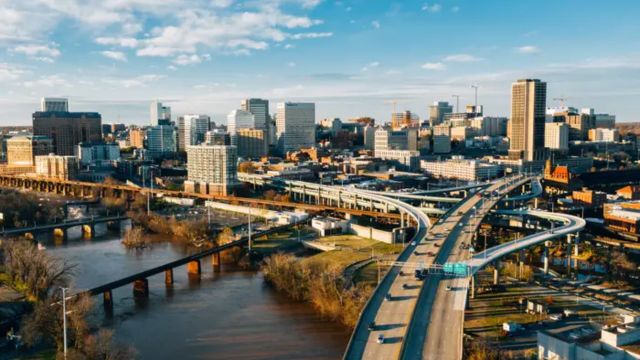Virginia, a state with a diverse cultural heritage and a storied past, is currently grappling with a pressing issue of drug trafficking and abuse. The U.S. Drug Enforcement Administration (DEA) reported a concerning surge in drug overdose deaths, reaching 1,627 in 2020—a staggering 41.2 percent increase from the previous year.
This disturbing trend is primarily attributed to the prevalence of synthetic opioids like fentanyl and carfentanil, often mixed with heroin, cocaine, or methamphetamine. While drug trafficking impacts every corner of the state, one city, Norfolk, has emerged as a focal point for this illicit trade. This blog post delves into the factors contributing to Norfolk’s status as the drug trafficking capital of Virginia, explores the consequences for the city and the state, and proposes measures to address the issue.
How and Why Norfolk Became the Drug Trafficking Capital of Virginia
Norfolk’s prominence in drug trafficking can be attributed to several key factors, including its strategic location, sizeable and diverse population, economic and military significance, and law enforcement challenges.
Location
Situated in the southeastern corner of Virginia along the Atlantic Ocean and the Chesapeake Bay, Norfolk is a pivotal hub with access to major transportation routes—highways, railways, airports, and ports. This strategic location facilitates the transport and distribution of drugs not only within the state but also nationally. Norfolk’s proximity to the North Carolina border, a base for many drug suppliers, adds another layer to the challenge.
Population
With a population of approximately 245,000, Norfolk stands as Virginia’s second-largest city. Its demographic diversity, comprising 47.1 percent white, 42.6 percent black, 7.5 percent Hispanic, and 3.9 percent Asian residents, contributes to the complexity of the issue. While most residents are law-abiding, some individuals are involved in drug-related activities, with ties to transnational criminal organizations further complicating law enforcement efforts.
Economy and Military
As a major economic and military center hosting key installations like the Norfolk Naval Station, the city attracts drug traffickers seeking to exploit the demand and supply dynamics among service members, civilians, and tourists.
Law Enforcement
Norfolk faces challenges in combating drug trafficking, including limited resources, jurisdictional complexities, and strained community relations. Coordinating with various agencies such as the DEA, FBI, U.S. Coast Guard, and U.S. Navy is essential but poses logistical hurdles. Building trust with marginalized communities adds another layer of difficulty.
Consequences for the City and the State
The repercussions of drug trafficking in Norfolk extend beyond immediate public safety concerns, affecting public health, safety, and welfare.
Public Health
Drug trafficking poses a significant threat to public health, leading to addiction, overdoses, and fatalities. In 2020, Norfolk reported 156 drug overdose deaths, the highest in the state. Synthetic opioids, particularly fentanyl, contribute significantly to these fatalities. Additionally, drug trafficking plays a role in the spread of infectious diseases such as HIV and hepatitis.
Public Safety
The impact on public safety is profound, resulting in an increase in drug-related crimes, violence, and corruption. In 2020, Norfolk experienced a 19 percent surge in homicides and a 14 percent rise in shootings. Drug-related violence encompasses a range of criminal activities involving traffickers, gangs, and users. It also fosters corruption, money laundering, and terrorism, eroding public trust in authorities.
Public Welfare
The social and economic well-being of Norfolk and the state suffer due to drug trafficking, affecting residents’ quality of life, education, employment, and income. The pervasive atmosphere of fear and insecurity impedes social cohesion and economic development, draining public resources that could be allocated to essential services like healthcare, education, and infrastructure.
What Can Be Done to Address the Issue
Effectively addressing Norfolk’s drug trafficking issue demands a comprehensive and collaborative approach involving various stakeholders and strategies.
Prevention and Education
Raising awareness through campaigns, programs, and initiatives can educate the community about the dangers and consequences of drug trafficking and abuse. Promoting positive alternatives, such as sports, arts, and employment opportunities, can serve as deterrents.
Treatment and Recovery
Providing accessible and affordable treatment and recovery services, including counseling and rehabilitation, can help individuals overcome addiction. Peer support, family involvement, and community engagement are crucial for facilitating recovery and reintegration into society.
Enforcement and Prosecution
Strengthening law enforcement efforts, including increased resources, coordination, and intelligence, is essential to disrupt and dismantle drug trafficking networks. Targeting high-level traffickers and seizing assets can act as a deterrent.
Cooperation and Partnership
Fostering collaboration among federal, state, and local authorities, military and civilian agencies, and community organizations is vital. Sharing information, resources, and best practices can enhance the overall response to drug trafficking.
Conclusion
While Norfolk grapples with its status as the drug trafficking capital of Virginia, it is crucial to recognize the city’s resilience and potential for growth. The multifaceted solution lies in a combination of prevention and education, treatment and recovery, enforcement and prosecution, and cooperation and partnership. Norfolk, despite its challenges, can serve as a symbol of collaboration and improvement in addressing the larger drug crisis affecting the nation.

